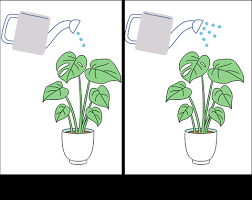When it comes to conducting experiments, remember the saying ‘don’t put the cart before the horse.’ Understanding the role of the independent variable is crucial for drawing accurate conclusions.
But how can you confidently pinpoint the independent variable amidst the variables at play? By grasping the fundamental characteristics and employing specific techniques, you can navigate the complexities of experimental design.
Stay tuned to unravel the essential insights into identifying the independent variable and its significance in research.
Definition and Importance
When conducting an experiment, properly identifying the independent variable is crucial for ensuring the validity of your results. The independent variable is the factor that you manipulate or change to observe its effect on the dependent variable. This variable stands alone and isn’t influenced by any other factors in the experiment. By clearly defining the independent variable, you can establish a cause-and-effect relationship between the variables under investigation.
Understanding the importance of the independent variable is essential in experimental design. It allows you to control and manipulate the specific factor that you believe will have an impact on the dependent variable. Without a well-defined independent variable, it becomes challenging to draw accurate conclusions from your experiment. Ambiguity or misidentification of the independent variable can lead to flawed results and misinterpretation of data.
Characteristics of the Independent Variable
To effectively identify the independent variable in an experiment, consider its specific attributes and how it relates to the dependent variable. The independent variable is the factor that the researcher manipulates or changes to observe its effect on the dependent variable. It’s crucial that the independent variable is clearly defined and controlled to ensure the experiment’s validity and reliability.
One key characteristic of the independent variable is that it should be manipulated by the researcher. This means that the researcher has control over this variable and can change its values deliberately to observe the impact on the dependent variable. The independent variable should also be clearly measurable and defined to ensure that the results of the experiment are accurate and reproducible.
Furthermore, the independent variable should have a direct or indirect effect on the dependent variable. This relationship is essential for determining causality in the experiment. By manipulating the independent variable and observing changes in the dependent variable, researchers can establish a relationship between the two variables.
Examples of Independent Variables
Exploring various factors that researchers manipulate in experiments can provide insight into examples of independent variables. Independent variables are the variables that researchers intentionally change or control to observe their effects on the dependent variable. Common examples of independent variables include time, temperature, dosage, frequency, and intervention type.
For instance, in a study examining the effects of different temperatures on plant growth, the independent variable would be the temperature levels set by the researchers. Similarly, in a research project investigating the impact of study duration on exam scores, the independent variable would be the length of time allocated for studying.
In another scenario, if scientists are studying the relationship between exercise frequency and weight loss, the independent variable would be the number of exercise sessions per week. These examples illustrate how independent variables are crucial in experiments as they allow researchers to determine the cause-and-effect relationship between the independent variable and the dependent variable.
Methods for Identifying the Independent Variable
To identify the independent variable in an experiment, you can employ specific methods that focus on defining the variable directly impacting the observed outcomes. One method is to vary the potential independent variables one at a time while keeping all other variables constant. By observing how changes in each variable affect the outcome, you can pinpoint which one has a direct impact.
Another method involves conducting a literature review to identify established factors that are known to influence the outcome of interest. This background research can help you narrow down the potential independent variables to test in your experiment.
Additionally, consulting with experts in the field can provide valuable insights into which variables are most likely to be the independent variable. Collaborating with colleagues or mentors can help you refine your experimental design and ensure that you’re focusing on the correct variable.
Considerations for Experimental Design
Consider key factors such as control variables, randomization, and sample size when designing your experiment to ensure the reliability and validity of your results. Control variables are essential to isolate the effect of the independent variable, so make sure to identify and manage any potential confounding factors. Randomization helps in distributing the effects of unknown variables evenly across groups, reducing bias and increasing the generalizability of your findings.
Moreover, the sample size plays a crucial role in the precision and accuracy of your results. Larger sample sizes can increase the statistical power of your study, making it easier to detect true effects. Additionally, consider the homogeneity of your sample to ensure that your results can be applied to a broader population.
Frequently Asked Questions
To determine the right range for the independent variable in an experiment, you need to consider the factors you want to test and how they might affect the outcome. Be specific and deliberate.
Yes, in an experiment, you can manipulate the independent variable multiple times throughout the study. This flexibility allows you to test different conditions or levels of the independent variable to observe their effects accurately.
When identifying the independent variable in an experiment, be cautious of mixing up variables or failing to clearly define the factor being manipulated. Stay focused on the specific variable that is being tested to avoid confusion.
Conclusion
When conducting an experiment, it’s crucial to accurately identify the independent variable. This variable is the one that’s manipulated by the researcher and has a direct impact on the dependent variable.
By understanding the characteristics and examples of independent variables, researchers can design experiments effectively and draw meaningful conclusions from their results.
Paying attention to identifying the independent variable is key in ensuring the validity and reliability of experimental findings.


